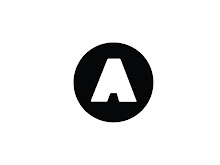Unless you've been living in a cave for the last month or so, you will know that Apple has unveiled it's new mobile operating system, iOS7, complete with
shiny new interface, which seeks to keep the iPhone abreast of its main competitors in the market, Microsoft's Windows Phone and Google's Android platform. At first glance iOS7 looks to do away with those old-timey real world imitation design elements of its previous iOS6 interface, such as the faux-wood bookshelves of the Newsstand application and the green felt casino table from Gamecenter. Both these examples are skeuomorphs, objects or features that are
'copying the design of a similar artefact in another material'. In the world of interface design, skeuomorphs can also relate to behaviour and physicality (think of 'turning' the pages of a document in iBooks or the 3D button-like appearance of icons on the homescreen).
Apple has been widely criticised over its use of skeuomorphism for well over a year, the bombardment gathering momentum and support across the Internet, from techblogs to the graphic design community. So it seems that with this latest announcement Apple have finally given in to the mob, and on the face of it, it seems they may have a point; who needs green felt when all you want to do is beat your highscore on Angry Birds whilst waiting for the train? Nevertheless, there are a few pertinent issues to consider before firmly stomping all over skeuomorphism – and Apple's seemingly firm departure from it.
One way skeuomorphs can be useful in interfaces is that they assist users in working out the function of a particular feature: 'this looks like a button, so I assume that when I press it a feature or function will be activated'; 'this looks like a notepad, so I assume I can use it to write notes'. The importance of this particular aspect of skeuomorphism, especially when relating to interfaces for touchscreens, is that they can assist greatly in introducing inexperienced users to new concepts, ideas and functions. For example, touchscreens. More specifically, the multi-touch type of touchscreens first made widely available in mobile devices by Apple back in 2007, with the launch of the original iPhone. Until then, our experience of mobile phones was characterised by screens that were screens and buttons that were buttons. Suddenly, there's just one button and the screen is now the whole phone; pretty radical to say the least. Within a few years though, almost every phone on the market has this kind of technology and everyone and their mums can use a touchscreen without freaking out and reaching for a 3310. Why? Because, among other reasons, the interface was intuitive enough to allow them to get to grips with this new way of interacting with stuff.
Of course today the touchscreen is everywhere, not just in the mobile phone market but in tablets and now laptops too. We don't need to be taught how to use these devices any more, they are part of our everyday lives. They feel familiar, we know where the buttons are. Which is why the Windows 7 interface, launched in late 2010 with the Windows Phone 7, was such a success and single-handedly defined the 'anti-skeuomorph' model that designers and developers have praised and emulated left right and centre. With the Windows Phone Microsoft recognised the familiarity of the touchscreen interface and also realised we wouldn't get confused if all the buttons didn't look quite so button-like, thereby liberating mobile technology from heavy reliance on obviously skeuomorphic design. In the blink of an eye, Apple's on the back foot, Microsoft are on a charge and the world is predicting the iPhone's downfall. Green felt is out, flat colour is in. We have seen the future, and it is paved with flat coloured squares. Now, three years later (perhaps a little tardier than most would've liked),
iOS7 is being touted as a Windows imitation, scrapping skeuomorphism altogether in favour of solid colour, gradients and Helvetica Neue.
But not all is as it seems. Skeuomorphism is still very much a part of the interface, in the behaviour of the features as well as what they look like, only this time around it's just that bit more subtle. The translucent,
'frosted glass' effect on the Control Center, for example, creates a sense of dimension and space, and the mysterious parallax effect on the homescreen seeks to give that space a physicality, a natural behaviour. And let's not forget, icons can be skeuomorphs too, from volume control to mailbox to calendar to compass to making a phonecall (crucially, Windows uses many of these skeuomorphs in its icon designs too). It seems with iOS7 Apple hasn't scrapped skeuomorphism at all, only used it more intelligently and in a less invasive manner, in a way that enhances the experience of using an iPhone and (finally) takes iOS to a new level. With a launch this autumn, the sense of anticipation is palpable, but one
thing's for certain: although it might not feature a single thread of leather
stitching, skeuomorphism is going to be all over it.
(written by
Rosi Digne-Malcolm, Junior Designer at Assembly Studios)






